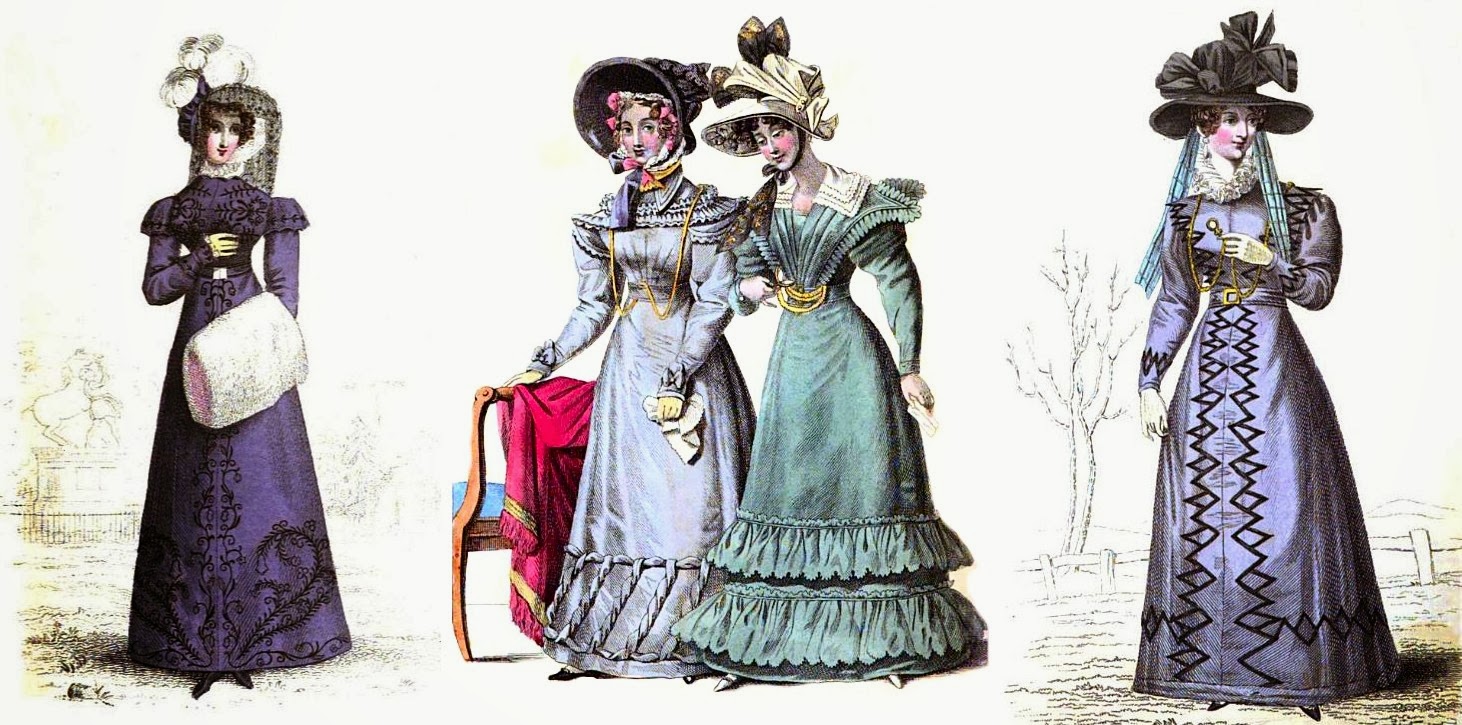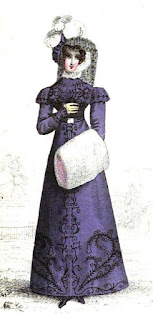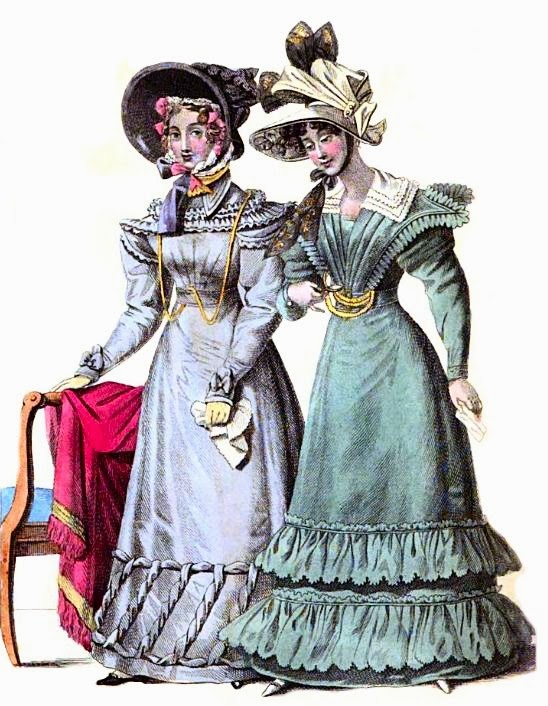 |
| Princess Augusta from The Lady's Magazine (1793) |
Princess Augusta (8 November 1768 - 22 September 1840) was the second daughter of George III and Queen Charlotte. She never married.
Birth of Princess Augusta
Princess Augusta Sophia was the sixth child of King George III and Queen Charlotte. She was born at Buckingham House on 8 November 1768 and was baptised in the grand council room at St James’ by the Archbishop of Canterbury on 7 December.
Queen Charlotte was an advocate of vaccination and so, in common with her other siblings, she was inoculated against smallpox on 3 December 1770, together with her brother, Prince Edward.
Education
The royal Princesses were educated at home, under Queen Charlotte’s watchful eye, by an array of governesses and tutors, supervised by Lady Charlotte Finch. Augusta enjoyed her studies, learning modern languages, history, geography, music, art, needlework and spinning.
The extrovert Princess
Augusta was of a lively and extrovert nature. In her diary, Fanny Burney describes Augusta as having “a great deal of sport in her disposition” (1). She was naturally energetic and as a girl she played cricket and football with her brothers. Fanny Burney also records that Augusta “has a gaiety, a charm about her, that is quite resistless; and much of true, genuine, and very original humour” and that she conversed “with that intelligent animation which marks her character” (1).
 |
| Fanny Burney, later Madame D'Arblay Second Keeper of the Robes to Queen Charlotte from Diary and Letters of Madame D'Arblay 1793-1812 |
The marriage prospects for George III’s daughters were severely limited by the King’s insistence that they should not marry either Catholics or commoners. The lack of potential husbands together with the restricted life that was enforced upon them led the Princesses to describe themselves as living in “The Nunnery”.
The King found fault with any of the suitors proposed for Augusta. It transpired that the King was unwilling to countenance the marriage of the younger Princesses while their elder sister, Charlotte, remained unwed. When the Princess Royal finally married in 1797, Augusta was already approaching thirty years of age.
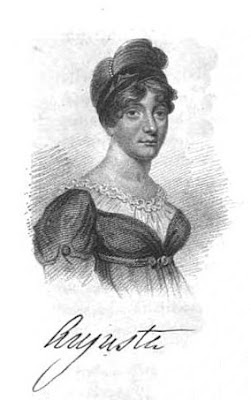 |
| Princess Augusta Sophia from A Biographical Memoir of Frederick, Duke of York and Albany by John Watkins (1827) |
Deprived of the ability to form an acceptable marriage, Augusta’s romantic inclinations found less suitable objects. First, she was attracted to Henry Vaughan, later known as Henry Halford, one of the King’s doctors. After this, she formed a long-standing attachment to Lieutenant-General Sir Brent Spencer, a heroic Irish soldier who was one of the King’s equerries.
She told her brother George, the Prince of Wales, about the strength of her feelings and, in 1812, she wrote to ask his consent to the match, acknowledging that it must be a private marriage as she knew the Queen would disapprove. The Queen did disapprove. When she heard of Augusta’s attachment she was aghast; she would not contemplate her marriage to such a man and forbade her from talking about it. It is possible that the marriage did take place, but it was never acknowledged and Augusta, officially at least, never married.
A controlling mother
 |
| Queen Charlotte from Diary and Letters of Madame D'Arblay |
During this time, the relationship between the Queen and her unmarried daughters became very strained. Augusta and her sisters demanded more freedom. The outraged Queen accused them of being unloving towards their sick father in their desire to visit London more often. The dutiful daughters felt hardly used and it took all the Prince Regent’s efforts to restore peace and gain a little more freedom for his sisters who all loved him dearly.
George IV’s hostess
After George IV’s accession to the throne in 1820, Augusta presided over levées and drawing rooms for her brother. She fulfilled the role of hostess in the absence of his estranged wife, Caroline, and continued to preside after he was made a widower in 1821. However, Augusta disliked her brother's mistress, Lady Conyngham, and she refused to act as hostess when she was to be present.
 | |
| George IV from Memoirs of her late royal highness Charlotte Augusta by Robert Huish (1818) |
After the death of her father, Augusta moved into Frogmore House, near Windsor, which had been bequeathed to her by Queen Charlotte. She was a companion to William IV’s widow, Adelaide, in the early years of her widowhood.
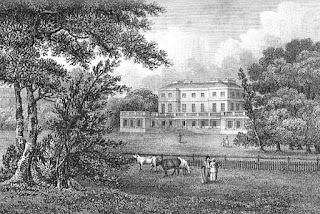 |
| Frogmore House from Memoirs of Her Late Majesty Queen Charlotte by WC Oulton (1819) |
She died at Clarence House on 22 September 1840 and was buried at St George’s Chapel, Windsor, on 2 October.
Note
(1) From Diary and Letters of Madame D'Arblay, Vol VI, 1793-1812 by Fanny Burney.
Sources used include:
Chedzoy, Alan, Seaside Sovereign - King George III at Weymouth, (Dovecote Press, 2003, Dorset)
D'Arblay, Madame (Fanny Burney), Diary and Letters of Madame D'Arblay, Vol VI, 1793-1812, edited by her niece, Charlotte Barrett (1846, Henry Colburn, London)
Hall, Mrs Matthew, The Royal Princesses of England (1871, London)
Hibbert, Christopher, George IV (Longmans,1972, Allen Lane, 1973, London)
Oulton, Walley Chamberlain, Authentic and Impartial Memoirs of Her Late Majesty Charlotte, Queen of Great Britain and Ireland (1819, London)
Purdue, AW, George III, daughters of (act.1766-1857), Oxford Dictionary of National Biography, (Oxford University Press, 2004, online edn, May 2009, accessed 10 Feb 2012)
Watkins, John, A Biographical Memoir of Frederick, Duke of York and Albany (1827, London)
















